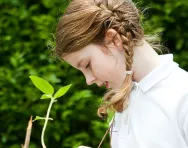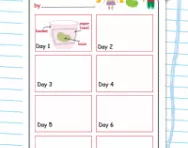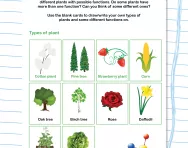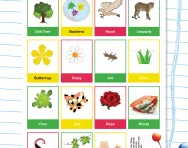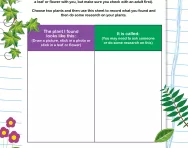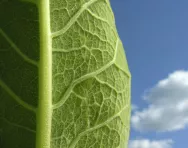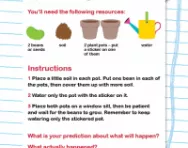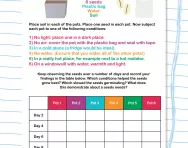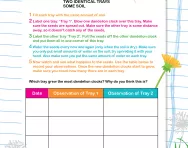Important update from TheSchoolRun
For the past 13 years, TheSchoolRun has been run by a small team of mums working from home, dedicated to providing quality educational resources to primary school parents. Unfortunately, rising supplier costs and falling revenue have made it impossible for us to continue operating, and we’ve had to make the difficult decision to close. The good news: We’ve arranged for another educational provider to take over many of our resources. These will be hosted on a new portal, where the content will be updated and expanded to support your child’s learning.
What this means for subscribers:
- Your subscription is still active, and for now, you can keep using the website as normal — just log in with your usual details to access all our articles and resources*.
- In a few months, all resources will move to the new portal. You’ll continue to have access there until your subscription ends. We’ll send you full details nearer the time.
- As a thank you for your support, we’ll also be sending you 16 primary school eBooks (worth £108.84) to download and keep.
A few changes to be aware of:
- The Learning Journey weekly email has ended, but your child’s plan will still be updated on your dashboard each Monday. Just log in to see the recommended worksheets.
- The 11+ weekly emails have now ended. We sent you all the remaining emails in the series at the end of March — please check your inbox (and spam folder) if you haven’t seen them. You can also follow the full programme here: 11+ Learning Journey.
If you have any questions, please contact us at [email protected]. Thank you for being part of our journey it’s been a privilege to support your family’s learning.
*If you need to reset your password, it will still work as usual. Please check your spam folder if the reset email doesn’t appear in your inbox.
Learning about plants in primary school
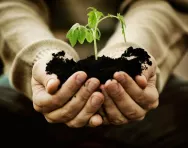
What do children learn about plants in primary school?
A plant is a living organism. In primary school children learn about a wide variety of different types of plants including flowers, trees and vegetables.
Plants in the primary-school classroom
Children are taught to name and identify common plants in their local environment. For example, children learn to recognise different trees (oak, maple, willow, sycamore, pine and cherry). They will be taught the difference between deciduous trees, which shed their leaves in winter, and evergreen trees, which do not.
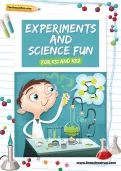
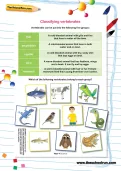
Download fantastic science resources today!
- Experiments And Science Fun pack
- Science Learning Programme for each school year
- All the instructions, questions and information you need
Children will also learn to name different types of local wild flowers such as daisies, dandelions, bluebells, and buttercups.
They will learn about the structure of a plant: leaves, flowers, petals, seeds, trunk, branches and stem. Children will be taught the function of each part of the plant and how water travels around the plant (water transportation).
Children will learn about the different needs of plants; this means what conditions plants need to grow for example; water, light, temperature, soil, nutrients and space.
When are children taught about plants?
In Year 1, children will learn to identify a few different types of flowers and trees including deciduous and evergreen trees. They will learn the different parts of a plant including leaves, flowers, fruit, seeds, roots, bulb, trunk, branches and stem.
Year 2 children learn about the needs of a plant including water, light and temperature. They will begin to describe how seeds and bulbs grow into mature plants.
In Year 3 children expand their knowledge of the needs of plants to include soil and nutrients. They will recap the structure of a plant and learn the function or job each part of the plant has. Children investigate how water travels around the plant.
Year 5 children explore how plants reproduce including seed dispersal and pollination, and learn about photosynthesis (the process plants use to make food from sunlight).
How do children learn about plants in the primary classroom?
Teachers and schools will use a variety of methods to teach children about plants.
Watch and observe:
Children will be given opportunities to watch and observe plants and vegetables grow. They will plant their own seeds either in pots or the school grounds. Children will observe trees and plants growing in their local environment if possible this might be during forest school lessons, in the school garden/ vegetable patch or walks and trips to the park and woodlands depending on the school facilities. Children may use magnifying glasses to examine the parts of flowers closely.
Diagrams, photographs and drawing:
Children will draw and label plants including trees and plants. Children may keep charts, graphs and records of plant growth.
Experiments:
Children will plan and carry out investigations and experiments for example they might plan a fair test to determine if a plant needs water to grow.
Video clips/books/images:
Children may watch video clips to teach them about plants and research using the internet and book for example they might research pollination.
Photographs, charts, classification grids:
Children will use pictures and classification charts to identify different flowers, trees and plants.
Plant learning activities to try at home
- Plant seeds and grow plants with your child at home. Cress seeds are very simple to grow in an empty yoghurt pot and also grow quickly so children can observe the growth easily. You can also grow herbs in pots, or tomatoes, carrots or potatoes if you have more space.
- Become involved in any local community growing projects or visit your local allotments.
- Find books about plants at the library.
- Go for a walk in a woodland and look for different types of trees and flowers.
- Look out for wild flowers such as daisies, buttercups, dandelions and discuss what they are called. Make a daisy chain together.
- A transportation of water experiment is easy to do at home; simply put a white carnation into some water coloured with food colouring and observe how the water travels up the stem and into the petals.
- Take photographs of trees and flowers or draw, sketch or paint interesting plants.











